Abstract
A loss-of-function point mutation in a protein is often rescued by an additional mutation that compensates for the original physical change. According to one hypothesis, such compensation would be most effective in maintaining a structural motif if the two mutated residues were spatial neighbors. If this hypothesis were correct, one would expect that many such compensatory mutations have occurred during evolution and that present-day protein families show some degree of correlation in the occurrence of amino acid residues at positions whose side chains are in contact. Here, a statistical theory is presented which allows evaluation of correlations in a family of aligned protein sequences by assigning a scalar metric (such as charge or side-chain volume) to each type of amino acid and calculating correlation coefficients of these quantities at different positions. For the family of myoglobins it is found that there is a high correlation between fluctuations in neighboring charges. The correlation is close to what would be expected for total conservation of local charge. For the metric side-chain volume, on the other hand, no correlation could be found.
Full text
PDF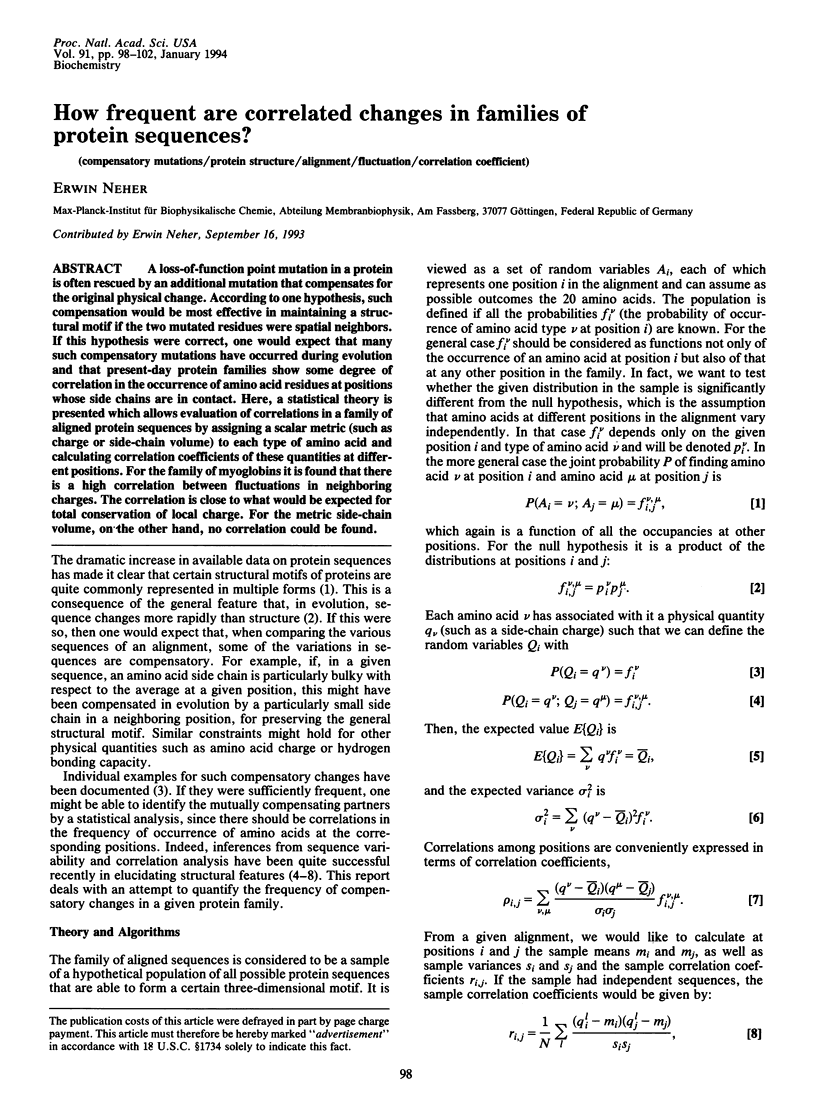
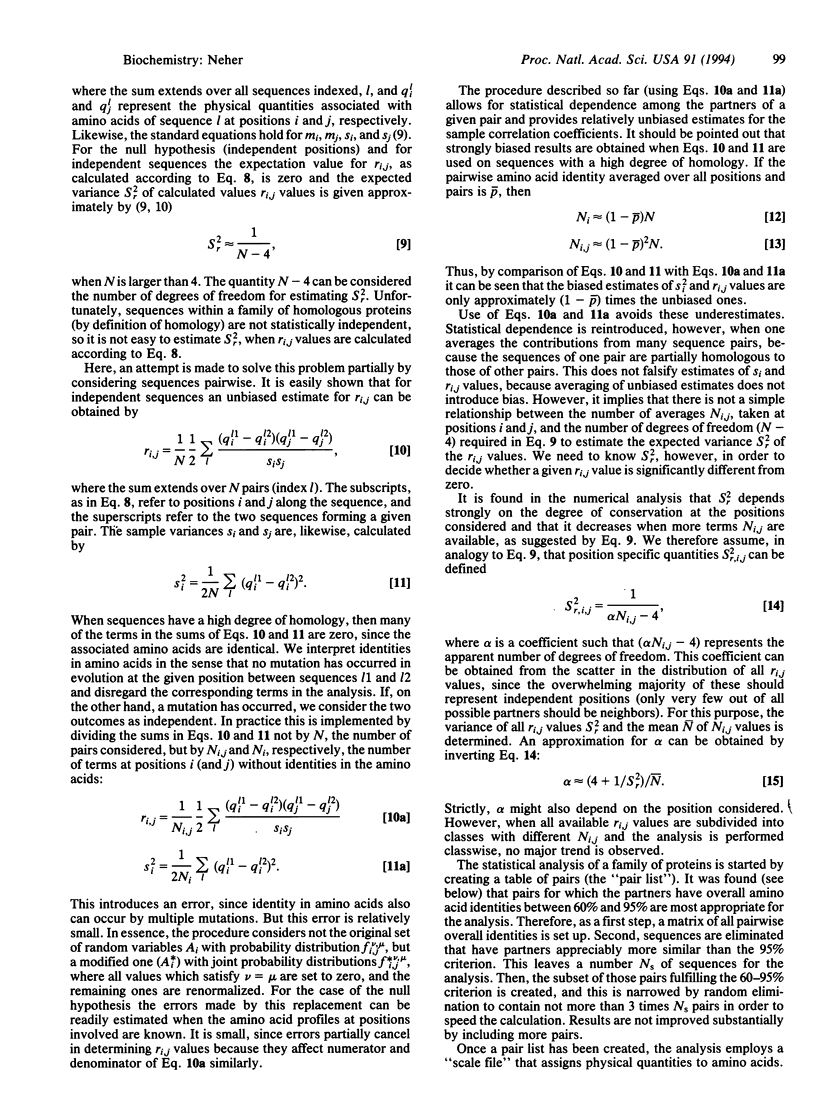
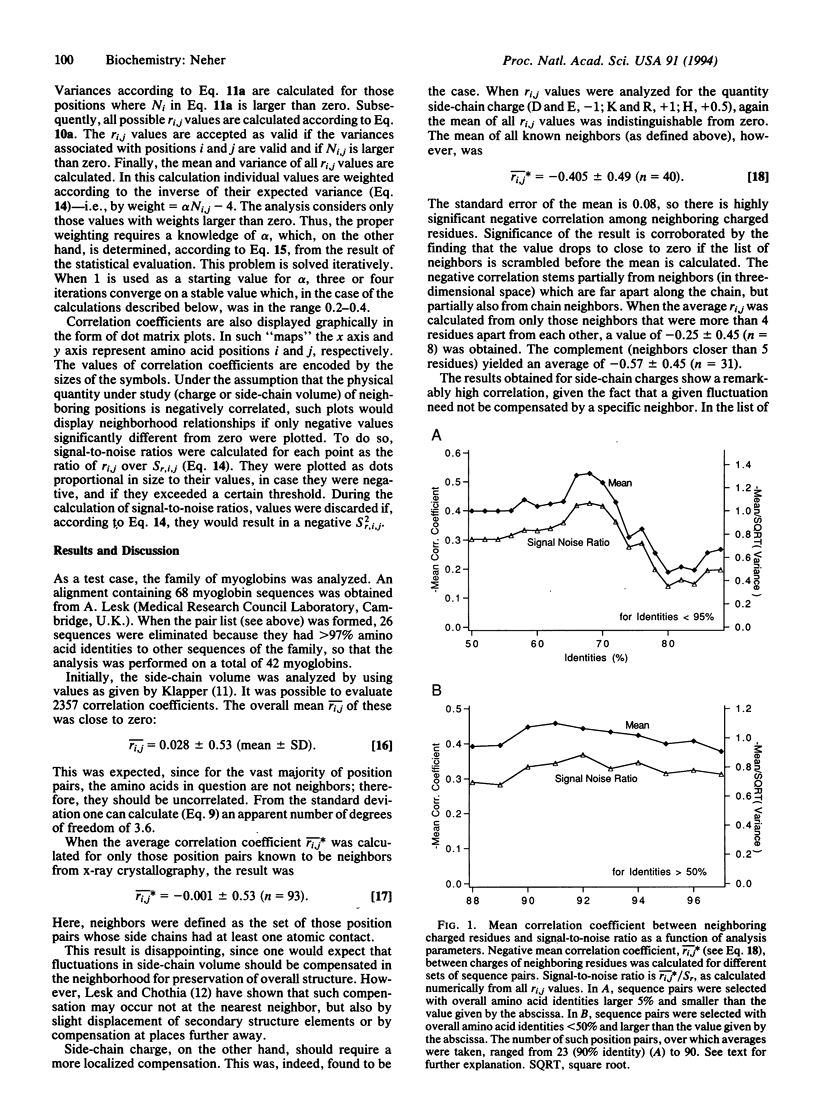
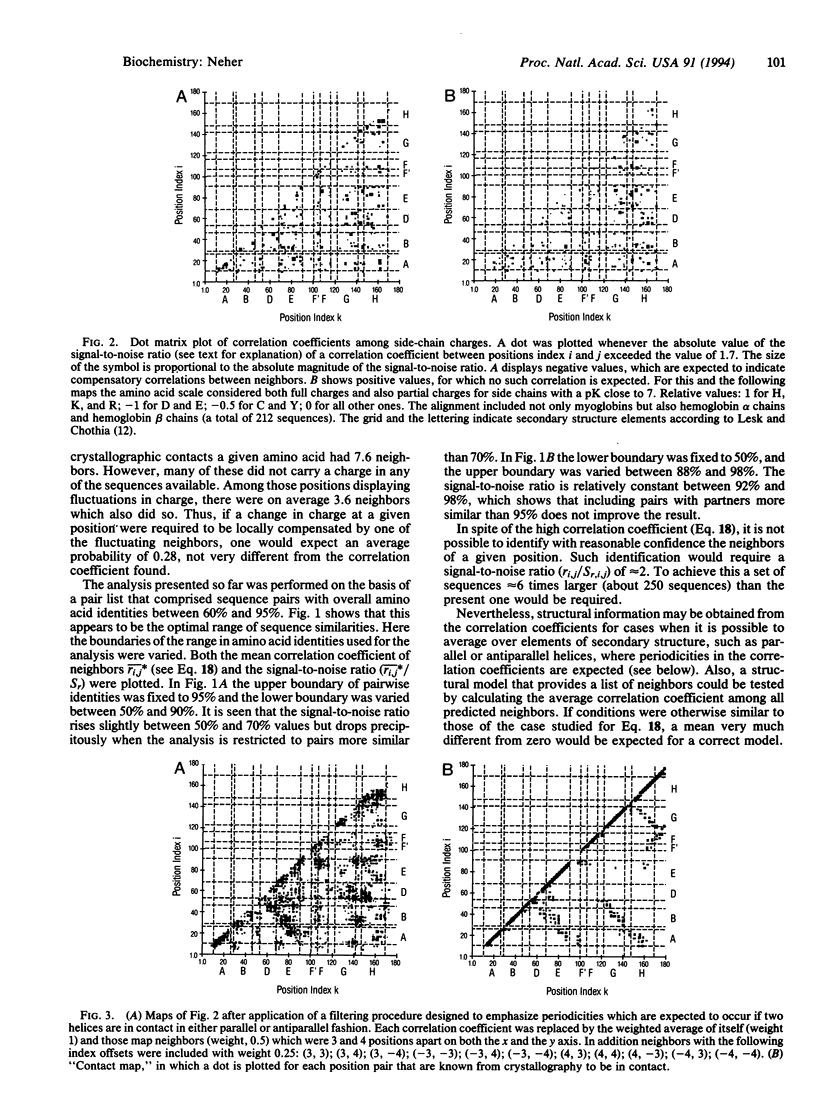
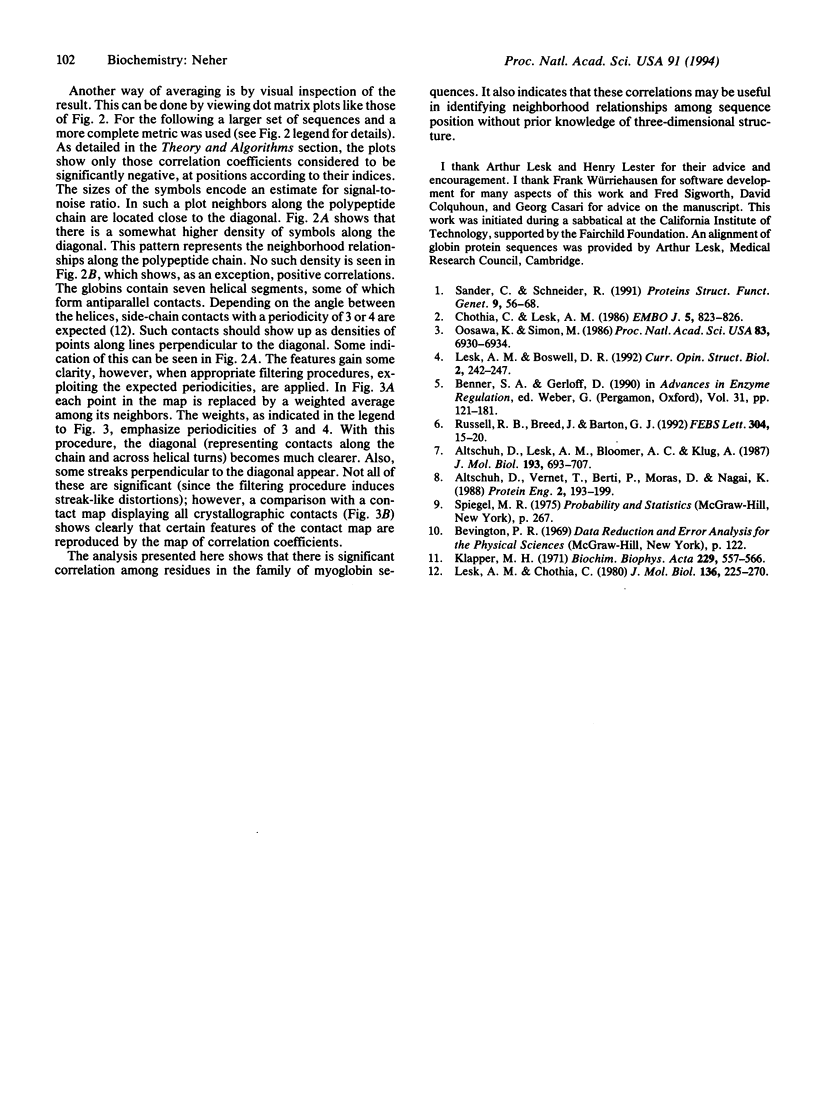
Selected References
These references are in PubMed. This may not be the complete list of references from this article.
- Altschuh D., Lesk A. M., Bloomer A. C., Klug A. Correlation of co-ordinated amino acid substitutions with function in viruses related to tobacco mosaic virus. J Mol Biol. 1987 Feb 20;193(4):693–707. doi: 10.1016/0022-2836(87)90352-4. [DOI] [PubMed] [Google Scholar]
- Altschuh D., Vernet T., Berti P., Moras D., Nagai K. Coordinated amino acid changes in homologous protein families. Protein Eng. 1988 Sep;2(3):193–199. doi: 10.1093/protein/2.3.193. [DOI] [PubMed] [Google Scholar]
- Chothia C., Lesk A. M. The relation between the divergence of sequence and structure in proteins. EMBO J. 1986 Apr;5(4):823–826. doi: 10.1002/j.1460-2075.1986.tb04288.x. [DOI] [PMC free article] [PubMed] [Google Scholar]
- Klapper M. H. On the nature of the protein interior. Biochim Biophys Acta. 1971 Mar 23;229(3):557–566. doi: 10.1016/0005-2795(71)90271-6. [DOI] [PubMed] [Google Scholar]
- Lesk A. M., Chothia C. How different amino acid sequences determine similar protein structures: the structure and evolutionary dynamics of the globins. J Mol Biol. 1980 Jan 25;136(3):225–270. doi: 10.1016/0022-2836(80)90373-3. [DOI] [PubMed] [Google Scholar]
- Oosawa K., Simon M. Analysis of mutations in the transmembrane region of the aspartate chemoreceptor in Escherichia coli. Proc Natl Acad Sci U S A. 1986 Sep;83(18):6930–6934. doi: 10.1073/pnas.83.18.6930. [DOI] [PMC free article] [PubMed] [Google Scholar]
- Russell R. B., Breed J., Barton G. J. Conservation analysis and structure prediction of the SH2 family of phosphotyrosine binding domains. FEBS Lett. 1992 Jun 8;304(1):15–20. doi: 10.1016/0014-5793(92)80579-6. [DOI] [PubMed] [Google Scholar]
- Sander C., Schneider R. Database of homology-derived protein structures and the structural meaning of sequence alignment. Proteins. 1991;9(1):56–68. doi: 10.1002/prot.340090107. [DOI] [PubMed] [Google Scholar]


